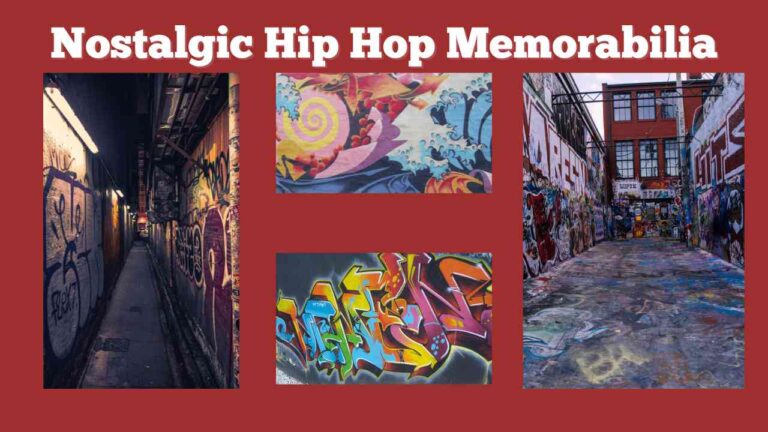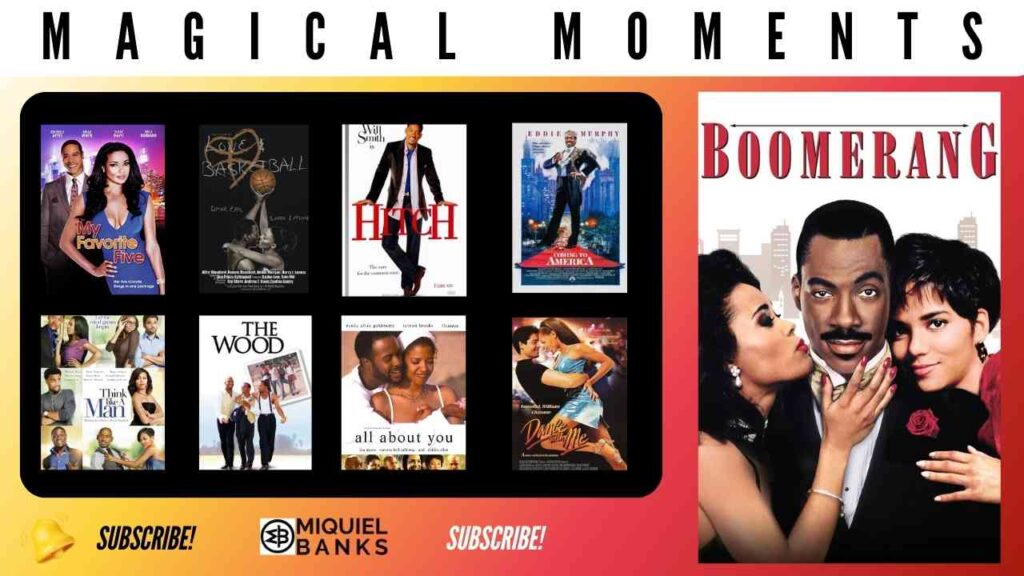Introduction
Hip hop culture is not just about the music; it is a powerful force that creates a connection with communities and generations.
The nostalgia that comes with hip hop brings back memories of high school dances, music videos, and the vibrant energy of the 80s and 90s.
In this document, we will explore the power of nostalgic hip hop memorabilia and how it can be used to create a sense of community and evoke emotions in your audience.
Whether you are a content creator who is hesitant to put yourself out there or someone looking to tap into the cultural richness of hip hop, we will provide you with insightful information on how to harness the power of this culture.
Join us as we delve into the world of hip hop memorabilia, uncovering its significance and potential impact on your community.
Get ready to take a journey through time and discover how culture can be an invaluable tool in creating a lasting connection.
Creating Culture-Driven Memorabilia
The Role of Hip Hop in Nostalgia
Hip hop acts as a time machine, transporting us back to moments that define our personal and collective histories.
The music, the style, the language – each element of hip hop culture encapsulates memories that resonate across generations.
When we think of the role of hip hop in nostalgia, we consider the power it holds in stirring emotions deeply tied to our formative years.
For many, it’s the recollection of the first time they heard a beat drop or the feeling of freedom in a crowded dance hall, echoing with the rhythms of the 80s and 90s.
Nostalgic hip hop memorabilia isn’t just about the physical items; it’s a gateway to reliving the experiences and emotions of youth, the rebellious spirit, and the camaraderie that the music fostered.
It’s this emotional charge that turns memorabilia into a potent tool for connection.
Building Connection through High School Memories
High school is a pivotal time in our lives, often marked by the music we listen to and the culture we embrace.
Hip hop memorabilia from this era—mixtapes, graffiti art, classic sneakers—can elicit a strong bond among those who shared similar experiences.
It’s more than just recalling the beats; it’s about the friendships forged in hallways and lunchrooms, battles in the parking lot, and the identity we shaped as we navigated adolescence.
This memorabilia serves as a tangible reminder of the sense of belonging and the discovery of a voice that hip hop provided.
By tapping into these high school memories through hip hop culture, we create an instant rapport with others who recognize and value the same cultural touchstones, fostering a sense of community rooted in shared nostalgia.
Genius Hidden in 80s & 90s Music Videos
The 80s and 90s music videos were more than just visual accompaniments to the sounds of hip hop; they were a canvas where the culture’s creativity and innovation were on full display.
These videos captured the essence of hip hop, from the fashion and dance moves to the storytelling and social commentary.
They introduced the world to the streets, the struggles, and the triumphs of the artists, often with a rawness and authenticity that was as captivating as it was influential.
Memorabilia from these iconic videos—posters, clothing, and props—carry the genius of their creators and the spirit of an era.
Collecting and sharing these items can reignite conversations about the groundbreaking artistry of hip hop and its enduring impact on music and culture at large.
They remind us of the time when hip hop was not just music but a movement.
Capturing the Essence of Hip Hop Culture
Infusing Culture into Memorabilia
Memorabilia becomes meaningful when it’s infused with the culture it represents.
For hip hop, this means each item is more than an object; it’s a piece of history, a fragment of a story, and a symbol of identity.
When we talk about infusing culture into memorabilia, we’re referring to the process of embedding the essence of hip hop into tangible forms.
This could be through the replication of iconic graffiti tags on clothing or by incorporating lyrics that speak to the social and political issues of the time into artwork.
The key is to ensure that each piece resonates with the vibrancy, the struggle, and the authenticity of hip hop culture.
This approach to memorabilia fosters a deeper appreciation and understanding of the roots and values of hip hop, bridging gaps between past and present enthusiasts.
Provoking Thoughts via Rhetorical Questions
When we capture the essence of hip hop culture in memorabilia, we’re not just creating keepsakes; we’re sparking dialogue.
Using rhetorical questions as part of the design or narrative attached to memorabilia can provoke thought and reflection.
What does it mean to be part of a culture that continually shapes and reshapes itself?
How do we reconcile the commercialization of hip hop with its roots in resistance and empowerment?
These questions don’t necessarily seek direct answers but instead encourage a deeper engagement with the culture and its history.
They remind us that hip hop is not static; it is a living, breathing entity that challenges and comforts, disrupts and unites.
Memorabilia that prompts such introspection not only celebrates the legacy of hip hop but also invites ongoing conversation about its future.
Historical Insights into the Culture of Hip Hop
Understanding hip hop culture requires more than just a surface appreciation of its music and art; it demands historical insight.
Hip hop memorabilia serves as a conduit to the past, offering a tangible connection to the events and figures that shaped the movement.
By exploring the origins of hip hop, from the block parties in the Bronx to the global phenomenon it is today, we gain a deeper respect for the pioneers who used their creativity as a form of resistance and self-expression.
Memorabilia that honors these historical roots—such as replicas of early flyers or photographs of groundbreaking moments—can educate and inspire.
They tell the stories of struggle, triumph, and relentless innovation, ensuring that the rich history of hip hop culture is preserved and passed down to new generations.
Transforming Hip Hop Nostalgia into Tangible Memorabilia
The Conversation between Culture and Nostalgia
Nostalgia and culture intertwine when we transform hip hop memories into physical memorabilia.
Each piece tells a story that goes beyond the object itself, speaking to a broader cultural narrative that many can relate to.
The conversation starts with an old-school vinyl record or a vintage concert poster, but it extends into personal anecdotes and shared experiences.
Why do these items evoke such strong feelings?
Is it because they remind us of hip hop’s golden era, or because they reflect our own journeys within the culture?
Hip hop memorabilia isn’t just about reminiscing; it’s about understanding how these cultural artifacts represent the collective consciousness of a generation.
They prompt us to reflect on our past, engage with the present, and consider the legacy we’re contributing to the ongoing story of hip hop.
Revealing the Expert Storyteller through Memorabilia
Memorabilia does more than commemorate; it narrates the rich tapestry of hip hop culture through the eyes of those who lived it.
The expert storytellers of hip hop are the artists, DJs, and fans whose experiences form the backbone of this vibrant community.
Through memorabilia, their stories are crystallized.
A worn pair of sneakers, the scratches on a DJ’s vinyl, the frayed edges of a concert ticket—each bears witness to the history and influence of hip hop.
These items reveal the passion, the artistry, and the authenticity that define the genre.
They aren’t mere objects but are imbued with the spirit of the storytellers who have made hip hop a transformative force in their lives and in the wider cultural landscape.
Collecting and sharing these pieces allows us to keep the narrative alive and honor the experts who have shaped hip hop’s enduring legacy.
Activist Memorabilia: A Defiant Voice of Culture
Hip hop has always been a voice for the voiceless, a platform from which the marginalized can speak truth to power.
Activist memorabilia captures this defiant spirit, serving as a bold reminder of hip hop’s role in advocating for social change.
Think of Public Enemy’s iconic logo, or the graffiti murals that paint a picture of resistance.
These items are not just collectibles; they are emblems of a movement.
They echo the calls for justice heard in the lyrics and beats that have mobilized communities and sparked conversations about inequality.
This sort of memorabilia carries the weight of the culture’s conscience, immortalizing moments when hip hop stood as a catalyst for activism.
By holding on to these pieces, we uphold the values of resistance and resilience that are as relevant today as they were when the ink was fresh or the record first spun.
The Power and Influence of Hip Hop
Assertive Hip Hop: A Critical Cultural Commentary
Hip hop has never shied away from asserting itself as a critical voice in cultural commentary.
Its power lies in its ability to confront, question, and reflect societal issues through a blend of rhythm and rhyme.
Assertive hip hop challenges listeners to engage with topics like racial inequality, economic disparity, and political activism.
Memorabilia that captures this outspoken nature—lyric books, protest flyers, and artist-designed apparel—remains not just an artifact but a call to awareness and action.
These pieces serve as a reminder of the cultural shifts that hip hop has both witnessed and instigated.
The genre’s influence extends beyond the music industry to touch every facet of society, prompting us to consider where we stand and how we respond to the world around us.
It’s a testament to the genre’s enduring relevance and its role as a voice for critical discourse.
The Determined Struggle: Hip Hop’s Proud History
Hip hop’s history is marked by a determined struggle, one that has seen its evolution from the streets to the global stage.
It’s a history proud in its roots, steeped in the experiences of communities that used music as a form of expression and resistance.
The memorabilia from this journey—whether old-school records, flyers for park jams, or branded attire from pioneering hip hop groups—embodies the tenacity of a culture that refused to be silenced.
These items are powerful because they represent periods of innovation, adaptation, and sometimes confrontation.
The narrative they carry is one of overcoming adversity and creating a space where art can flourish against the odds.
This aspect of hip hop’s history is a source of pride, providing inspiration for those who continue to navigate their path through the music and culture today.
Each piece of memorabilia is a chapter in a larger story of resilience and pride.
The Direct Impact: How Nostalgia Shapes Community Perception
Nostalgia has a direct impact on how communities perceive and engage with hip hop culture.
It’s not just about a wistful yearning for the past; it’s about how that past informs current identity and community values.
When hip hop enthusiasts don vintage clothing or play classic tracks, they’re not just recalling a bygone era—they’re reinforcing the cultural bonds that hip hop has created.
Nostalgic elements shape community perception by highlighting the enduring principles of hip hop: authenticity, creativity, and unity.
Memorabilia acts as a bridge, connecting the new generation with the old, ensuring that the original spirit of hip hop remains alive and influential.
It serves as a testament to the culture’s power to transcend time and remain relevant, continually shaping and reshaping the fabric of the community it represents.
Harnessing the Potential of Hip Hop Memorabilia
Engaging the Community through Cultural Memorabilia
Cultural memorabilia has the unique power to engage the hip hop community by creating a shared sense of history and identity.
When we expose new generations to classic memorabilia, we’re not just showing them relics; we’re inviting them to experience the essence of hip hop culture.
Engaging the community through these items can take various forms, such as interactive exhibits, educational workshops, or themed events that celebrate the legacy of hip hop.
These experiences allow participants to touch, see, and even create their own memorabilia, forging a personal connection with the culture.
It’s a way to bridge gaps between ages and backgrounds, as everyone finds common ground in the appreciation of hip hop’s journey.
By harnessing the potential of cultural memorabilia, we ensure that the spirit of hip hop continues to resonate and inspire community engagement.
Ending with a Challenge: Your Role in Solidifying Culture
As we delve into the world of hip hop memorabilia, it’s crucial to recognize that each of us plays a role in solidifying and perpetuating the culture.
The challenge lies in not just being passive consumers but active participants.
How do we contribute to the legacy of hip hop?
Do we seek out and preserve the artifacts that tell its story?
Are we engaging with the culture in a way that adds depth and breadth to its narrative?
It’s about more than owning a piece of history; it’s about understanding and promoting the values that hip hop stands for.
By curating collections, creating art, or simply sharing the stories behind memorabilia, we each become a custodian of hip hop’s rich heritage.
Accepting this challenge means committing to the responsibility of keeping hip hop culture vibrant, relevant, and true to its roots for future generations.
Conclusion
The final call to action is a personal one: awaken the hip hop cultural critic within you.
This isn’t just about collecting memorabilia; it’s about engaging with hip hop culture in a way that is thoughtful and critical.
What does the music represent, and how does it reflect the times?
How can memorabilia act as a catalyst for discussion and change within your community?
Hip hop has always been a platform for critical thought and social commentary.
By becoming cultural critics, we not only preserve the artifacts of hip hop; we also contribute to its evolution.
Analyze lyrics, discuss the significance of fashion trends, and consider the impact of hip hop on society at large.
This is how we ensure that hip hop remains a living, breathing entity that continuously challenges and inspires.
The culture needs your voice, your perspective, and your passion.
Embrace it.











